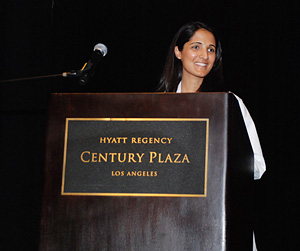- Question: How do the ingredients in e-cigarettes and vaporizers affect respiratory health? - August 16, 2019
- Bad Technique and Vocal Injury - January 9, 2019
- Is Edible Marijuana Dangerous for the Voice? Myths Dispelled - December 18, 2018
- Surprise! You have a hemorrhage - January 31, 2018
- Graves’ Disease: Treatment Overview - September 25, 2017
- Adele and the Stigma of Vocal Injury - July 11, 2017
- Vocal Curbside Consult: How does the thyroid affect the voice? - May 16, 2017
- Vocal Curbside Consult: How do hormones affect the voice? - May 3, 2017
- Vocal Curbside Consult: How do emotion and stress affect the voice? - April 17, 2017
- Vocal Curbside Consult: Vocal Recovery After Illness - April 7, 2017

You can’t seem to turn on the television or radio without hearing something about vocal fry. A study was published recently in the Journal of Voice about vocal fry. It was startling in that it found 2/3 of the studied women exhibited use of vocal fry in their speaking.
What is vocal fry?
Vocal fry is the low, vibratory sound that comes in some people’s speech, particularly at the end of sentences.
Zooey Deschanel is often used as an example of a women who dips into fry regularly. In this interview, it can be heard at the end of many sentences (check out the word “getaway” at 0:16 if you are unsure what fry sounds like):
Fry is the lowest of the vocal registers. There are three vocal registers (falsetto, modal and fry). Falsetto is the highest and modal is where we tend to speak naturally.
Fry is the lowest of the vocal registers. There are three vocal registers (falsetto, modal and fry). Falsetto is the highest and modal is where we tend to speak naturally.
How does vocal fry occur?
Vocal fry occurs when the vocal (arytenoid) cartilages squeeze together very tightly. This allows the vocal cords themselves to be loose and floppy. When air passes between them, they can vibrate irregularly, popping and rattling.
We used to believe that vocal fry suggested a voice problem. However, after years of seeing young women with this pattern in their speaking voice, and seeing relatively normal looking vocal cords, I have begun to question this. While undoubtedly this is not “normal” speech and will result in damage, it is increasingly accepted in music and speech in the teenage and 20-something set. It does not always indicate a vocal cord problem exists; rather it is a usage problem.
What does vocal fry look like on video?
The following video is a demonstration of videostroboscopy and vocal fry. The patient first starts in modal register (normal clear voice at a speaking pitch) and then deliberating pushes down to vocal fry. She later goes back to modal register.
The transition to fry occurs at 6 seconds on the video. Notice how much force is required to produce this sound (squeezed larynx). Over time, this can damage the vocal cords.
Why is this happening now?
That is a question that will likely not find an answer. This appears to be a culture shift, although there are theories as to why this is happening.
The researchers in the Journal of Voice study observed that women were much more likely to exhibit fry than men. Earlier studies showed that this vocal creak was associated, in women, with being educated, urban-oriented and upwardly mobile. There’s a theory that because the rumbling, deep male voice is perceived as being authoritative, perhaps that is why women are emulating it. It may even be subconscious.
But this does not explain why music and pop culture have adopted the creak.
Some feel the fry sound connotes a laid-back attitude that the younger generations are seeking to embody. It is easy to see why the young generation is adopting it; it’s omnipresent:
Kim Kardashian (fry begins at 1 minute):
Katy Perry (fry begins at 33 seconds):
Britney Spears (fry begins at opening measure of singing):
I have vocal fry. Do I need to do anything about this?
Over time, this can be damaging. This is a learned pattern of speech (how many young teenagers do you hear speaking like this?). To prevent damage, this pattern must be unlearned.
Videostroboscopy by a laryngologist aids in diagnosis. Treatment is tailored to the individual patient. A laryngologist can determine how best to treat the vocal fry, and if there are any medical problems that may be causing it. Usually treatment involves working with a qualified voice therapist.
To learn more about Dr. Reena Gupta or vocal fry, visit: http://www.voicedoctorla.com/



